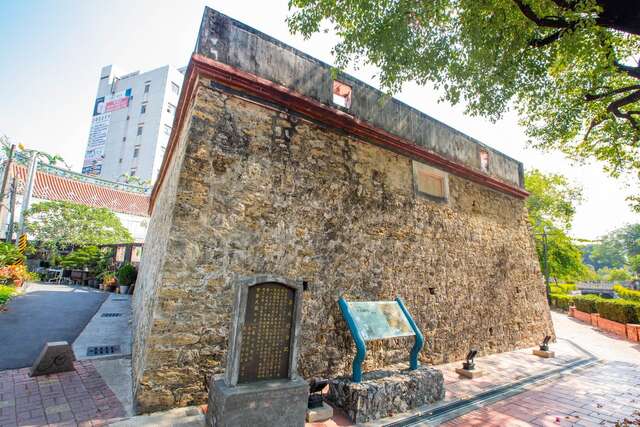Cao Gong Temple / Heisei Battery Introduction
The temple was built in memory of the contributions of County Magistrate Cao Jing during the Daoguang era. On the south side of the temple square, there are 12 stone tablets from different periods, among which the "Cao Gong Zun Ji," made of four pieces of long granite inscribed with characters, was a memorial document submitted to the court when "Cao Gong Zun" was named in the 19th year of Daoguang, praising Cao Jing's achievements. Behind the Cao Gong Temple is the Heisei Fort, with a wall embedded with a granite plaque that reads "Heisei." The aura of the original fortification guarding the city can still be faintly felt. To solve the drought issue of Fengshan City, County Magistrate Cao Jing, during the Qing Daoguang period, introduced water from the Gaoping River and built various irrigation projects, greatly improving the irrigation of the farmland in the Fengshan area at that time. As a token of appreciation for his contributions, the people of Fengshan established a shrine in a study hall. In 1900, when Taiwan Governor-general Kodama Gentarō inspected Fengshan, funds were raised to relocate the shrine to its current site, and it was upgraded to Cao Gong Temple in 1992. The Heisei Fort is located behind the Cao Gong Temple, approximately 5 meters high, square in shape, with stairs on the inside leading up. The front features an engraved horizontal plaque made of granite, with the characters "Heisei" beside the inscription "Built by Cao Jing." The entire fort is structurally very solid and unassailable.






































